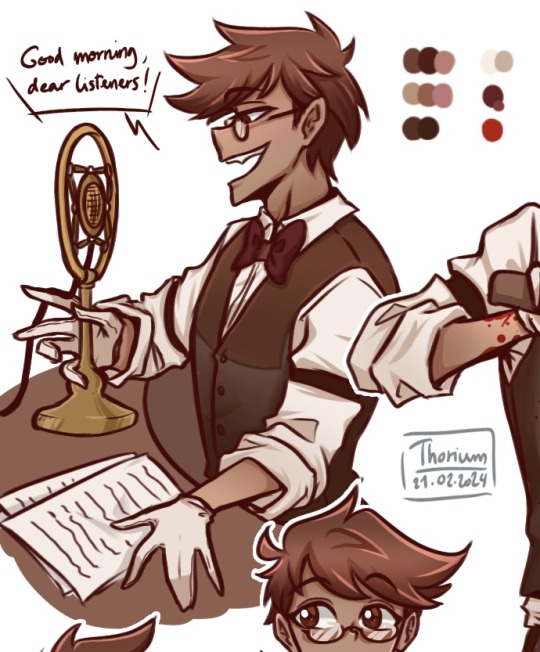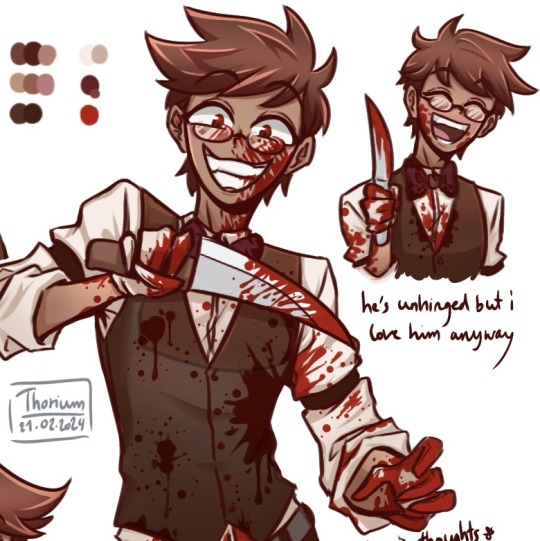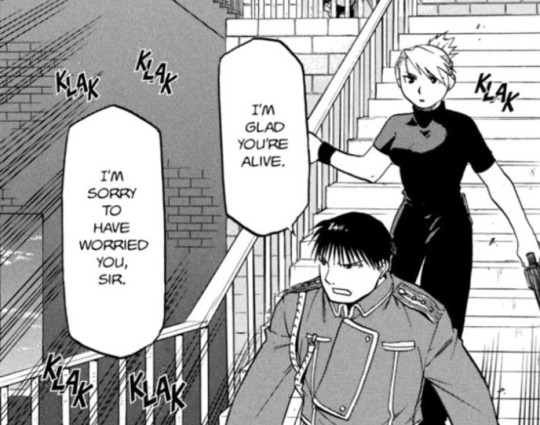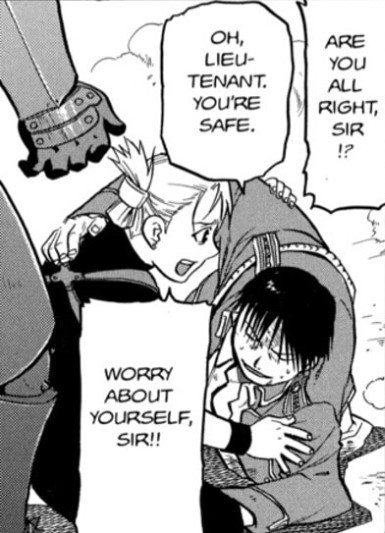#french serial killer
Explore tagged Tumblr posts
Text
The Notorious Michel Fourniret: Unraveling the Dark Path of a Serial Killer
Michel Fourniret, a name that sends chills down the spine, was born into a tumultuous world in the heart of France. His early life, shrouded in mystery and darkness, provides a glimpse into the complexities that shaped the mind of a notorious serial killer.

French self-confessed serial killer Michel Fourniret in Reze, France, March 15, 2006. © Fred Dufour, AFP
Early Life and Upbringing
Fourniret's childhood was marked by instability and upheaval. Born on April 4, 1942, in Sedan, France, he was raised in an environment rife with familial discord. His family background, marred by dysfunction and turmoil, sowed the seeds of anguish within his young heart. The haunting echoes of his tumultuous upbringing would later reverberate through the annals of criminal history.
The bleak backdrop of his early years, coupled with the absence of a nurturing environment, cast a long, dark shadow over Fourniret's formative years. The absence of stability and love, essential for a child's emotional development, laid the foundation for the sinister path he would ultimately tread.
Ventures into Criminal Activities
Fourniret's immersion into the realm of criminal activities unfolded against the canvas of his troubled past. The murky alleys of his mind harbored motivations borne of deep-seated anguish and a craving for dominance. His initial forays into criminality marked the inception of a harrowing journey that would culminate in a trail of unspeakable atrocities.
The convergence of internal turmoil and external circumstances propelled Fourniret into a world where the boundaries between right and wrong blurred into obscurity. The allure of control and power beckoned to him, setting in motion a sequence of events that would plunge countless lives into darkness.
Convicted Crimes and Victims' Stories
Fourniret's reign of terror culminated in a series of heinous crimes that shattered the tranquility of communities and scarred the fabric of society. His convictions, each a testament to the depths of human depravity, stand as grim milestones in the annals of criminal history.
The victims, each a precious soul with dreams and aspirations, fell prey to Fourniret's malevolence. Their stories, etched in the tears of their loved ones, serve as poignant reminders of the unfathomable loss inflicted by this remorseless predator. The haunting specter of their untimely demise echoes through the corridors of time, imploring us to remember their lives beyond the darkness that engulfed them.
Investigation and Capture
The pursuit of justice for Fourniret's victims bore witness to a relentless quest for truth in the face of daunting challenges. Law enforcement, undeterred by the labyrinthine nature of the investigation, persevered in their pursuit of the elusive specter that haunted the collective consciousness.
Breakthroughs, akin to shards of light piercing through an impenetrable shroud, illuminated the path to Fourniret's eventual capture. The tireless efforts of investigators, fraught with adversity and uncertainty, underscored the unwavering commitment to deliver justice to the victims and their grieving families.
Potential Involvement in Other Crimes
The enigmatic shadow cast by Fourniret's malevolence raises profound questions regarding the extent of his transgressions. Speculations surrounding his potential involvement in other crimes, not yet brought to justice, linger in the periphery of societal consciousness. The tendrils of evidence and theories, woven into a tapestry of uncertainty, beckon us to confront the possibility of a legacy of darkness far more expansive than previously perceived.
Conclusion
Michel Fourniret, a name etched in infamy, serves as a stark reminder of the depths to which human darkness can descend. His early life, fraught with turmoil, offers a glimpse into the complex interplay of nature and nurture that shapes the human psyche. The crimes for which he has been convicted, and the lives he callously extinguished, stand as testaments to the enduring impact of his malevolence.
The investigation and pursuit of justice, though fraught with challenges, exemplify the unwavering commitment to confront evil and deliver solace to the hearts shattered by Fourniret's atrocities. As we confront the possibility of his involvement in additional crimes, we are reminded of the profound responsibility to honor the memories of all those who fell victim to his darkness.
In the twilight of Fourniret's legacy, the stories of his victims, their lives, dreams, and the profound void left in their wake, beckon us to remember the enduring light that transcends even the darkest of shadows.
1 note
·
View note
Text
human alastor

(With a bonus baby al)
(Ignore whatever tf I did with the microphones idk how they work I’m sorry)




#I love the fact that he’s half French creole cause I am too we’re twinsies#(Im not a serial killer I promise)#I’m still sick and feeling miserable#He’s my emotional support serial killer#alastor#alastor hazbin hotel#hazbin alastor#hazbin art#hazbin hotel#hazbin hotel fanart#hazbin hotel alastor#radio demon#thorium.art#hazbin hotel 2024#hazbin#hazbin hotel art#vivziepop#human alastor#the radio demon#cw blood#sorry i forgot
4K notes
·
View notes
Text
Sometimes, people wish fairy tales were real life. But in some cases, we deeply regret it...
Today I want to briefly talk about an actual real-life case of Bluebeard - the infamous French serial killer Landru. Of his full name, Henri Désiré Landru. Of his mediatic nickname, "The Gambais Blue Beard". Never had a criminal case been so close to the world of fairy tales: people like to call murderers "witches", "ogres", "devils", but this man is an actual real-life Bluebeard.

The criminal investigation began in 1918, when the mayor of the small town of Gambais (Yvellines) received a letter from a certain Miss Pellat. Miss Pellat was worried about one of her friends, Anne Collomb: she had recently taken domicile with her fiancé, Mister Dupont, at Gambais, but since then had abruptly cut off all communications. The mayor unfortunately could not be of help: he had no knowledge of any "mister Dupont" at Gambais. Not much later, the mayor received another letter about a missing woman - this time it was a "miss Lacoste", who asked about the wellness of her sister, Célestine Buisson, who had recently moved to Gambais with a "mister Frémyet". But again, the mayor was at loss: he knew not of anyone by this name.
The mayor however had the two families get in contact, and they realized that mister Dupont and mister Frémyet were one and the same... And both women had answered almost identical matrimonial advertisements. This opened an investigation, led by inspector Jules Belin. They found that the this mysterious man had taken his fiancées to an isolated villa near Gambais, called "L'Ermitage" (the place here the hermit dwells) because it was 300 meters away from the nearest house. The owner of the house explained that he did not live by it - he was renting it to "mister Frémyet". Said mister Frémyet claimed to live in Rouen, but this was a lie, and all of his letters were actually redirected to the mailbox of a certain "mister Guillet"... located at the house of Célestine Buisson, the second missing woman, in Paris.
The investigation could have stopped there, if a neighbor of miss Lacoste hadn't recognized the mysterious man, getting out of a Parisian earthenware shop with a a woman. The inspector Jules Belin discovered that this man was the famous "Lucien Guillet", and he had left an adress to the shop - for a special delivery. Finding the adress to be in Paris, he was arrested, in april of 1919, on the very day he was celebratng his fiftieth anniversary with... his family, his wife and kids. And this is where the inspector discovered that Dupont/Frémyet/Guillet was in reality called... Henri Désiré Landru.

Let us go back in time to understand how Landru became the monster he is known as. He was not born in a wealthy family, though his family was not miserable and he had quite a happy childhood. He was born in 1869, his mother was a seamstress, his father a factory worker. In school he proved to be excellent at drawings and mathematics, which led him to perform some architecture studies (though he did not pursue there very far - enough to get some low-ranking positions at an architecture firm as his first job).
In 1889, the same year he got said first job, he encountered his future wife, Marie-Catherine Remy, daughter of a laundress. To seduce her, he lied - the first of the many lies he would tell her. He pretended to have a better job within the firm he worked with than he really had, and as such he managed to marry her in 1893 (he had to do three years of military service in-between). Together they had, beteen 1891 and 1900, four children. After the crimes of their father was revealed, they demanded to have their family name changed to one of their mother, Remy.
Landru was not someone whom fortune smiled upon. Between 1893 and 1900, he practiced a dozen of different jobs and was hired by fifteen different people - sometimes he was a plumber, other times an accountant, sometimes he made roofs for houses, other times he draw maps for various projects... With four children to feed, this clearly wasn't enough - the Landru clan was living in poverty. So, to take care of his family as best as he could, Landru decided to abandon honest jobs, and he got into scams.

From 1900 to 1914, Landru organied many different scams and crooked operations to steal people's money. His first scam was organizing a national advertisement campaign about a future motorized bicycle factory (he had indeed prepared the previous year an actual, serious project for motorized bicycle, which he used to fuel his scam). He took pre-commands, but asked for a third of the price to be paid in advance - and of course, no bicycle was actually built...
Constantly switching names, he kept inventing more and more tricks. Buying garages but selling them immediately before even giving the original owner their money ; encouraging investors to fund a factory that did not exist ; organizing engagement celebrations with a woman only to run away after stealing her bank shares... Unfortunately he wasn't really good at fleeing justice - he regularly got minor condemnations to prison, spending there some months or years a handful of times. One of these condemnations was cut-short after he attempted a suicide, and the psychiatric reports of the time are very interesting when it comes to Landru's mental state. Because they noted that he clearly was not insane... but they still wrote that he was not fully sane. Not disturbed enough to have any mental disease, but still too disturbed to be treated like a regular person.
What happened in 1914 that made Landru fall into his "Blue Beard" ways? Why switch from being a petty crook to a serial killer? The most common and accepted theory is that it is due to the justice system. Due to having been sent to jail for a given amount of sentences "above three months", it was decided that his next sentence was to be sent "au bagne" - at the Guyane penal colony. Not only would this mean an exile and a life-long sentence, but back in the 1910s, many people di not survive the penal colonies due to the awful living conditions prisoners had to undergo. This was a true death sentence. So, Landru decided that, next time, he wouldn't be caught...

From 1914 onward, Landru put together a large "marital scam" with deadly conclusions. He put out matrimonial ads, again inventing all sorts of names and pseudonyms, but always presenting the same identity - he was a wealthy and lonely widow searching for a wife. By lying like this, he attracted 283 different women, that he seduced and entertained for a time - but many he rejected and did not do anything with. Why? Because they were ot isolated enough, or not rich enough. Landru was searching for victims with no direct family or close friends, and with some money and goods (even if they were not wealthy or upper-class). He managed to find some... he found ten of them, and he killed them one by one.
Landru was an expert liar and a sweet-talker. After making his victims believe he was indeed the wealthy widow he pretended, he convinced them to sign papers that would allow him to take control of their bank accounts. Then he took them to an isolated villa, where he killed them. He killed his four first victims in a villa of the small town of Vernouillet, but he then switched to the Gambais villa he is most famous for, where he murdered seven more people. Why the change? Because one day, as he got back from the Vernouillet house, he got caught with an expired train ticket and he was forced to leave papers with the villa's adress. Not wanting to get caught, he changed his "murder lair". Once the murders were performed, he took all of the money of his victims, and then went to their house to remove their furniture and belongings. He was even helped by one of his sons to move the items into garages and storage rooms he rented, before selling them at auctions.
His son, you ask? Well yes. Because you see: Landru pretended to his wife and kids that he was an antiquarian, and second-hand dealer - and they thought that all these furniture he handled, he had actually bought... And wait, you still ask, seven plus four? It makes eleven victims, not ten! Indeed... Not all of Landru's victims were women. One was a man. When he killed in 1915 his first victim, Jeanne Cuchet, a 39 year old widow... he also killed her son, the 17 years old André, who had been taken with his mother to the Vernouillet villa. Landru seemingly did not want to leave any "collatoral damage" behind... Not even animals were spared: we know that around the time of the murder of his final victim, Marie-Thérèse Marchadier, the 37 years old owner of a prostitution house, he also strangled her three dogs and left their corpses in her house in Paris.
It has been regularly pointed out that the context of World War One, "The Great War", whose dates match the dates of Landru's murder (he began his fake marital ads in 1914, killed his first victims in February 1915, his last in January 1919), it what definitively helped and eased Landru's transformation into a serial killer. His mental state, already withered by his family's poverty, his mythomania and his fear of the punishment of justice, clearly worsened with the ambiance of death and destruction of the conflict. And the confusion and chaos caused by the war made his murders much easier. If he could regularly return to his wife and kids for brief sojourns, even though justice knew he was a convicted crook fleeing his sentence and his sending at a penal colony, it was thanks to the war keeping everybody busy. If he managed to attract so many lonely bachelors and widows in search for some money and a more stable situation, it was thanks to the war. And the war even helped him with his lies and fake identities: he kept pretending he was a refugee from Northern France (which was then occupied by the German forces), and used this as an excuse for him not having any official papers.

Let us go back to when Landru was arrested.
The police found the many garages where he kept the furniture of his victims. It also found his full and complete comptability - which not only revealed the vastitude of his marital scam (as he had kept the names and adresses of all of his 283 "eventual fiancées"), but also listed all of the tools he had bought for his murders (metal saws, wood saws, lot of coal). How did Landru killed his victims? We don't know exactly how - did he poison them, strangle them? It is a mystery to this day. But we do know how he got rid of the bodies... When investigating the Gambais villa, police found burned remains in the chimney and in the stove. A few pieces of burned female garnment... and burned human bones. Three heads, five feet, six hands. It is considered today that Landru cut off the body of his victims in pieces - the large parts (torso, arms, legs) were buried in the forest or thrown in ponds, while the smaller parts (head, hands, feet) were burned in his stove and/or chimney. In fact, despite being isolated, L'Ermitage still got complaints by those living closest to it due to the "foul smells" that came out of its chimney from time to time.
But what condemned Landru more than anything was a little black notebook he had with him all the time... A notebook in which he had noted the name of the eleven missing person, with hours associated with them - likely the hours of the murders. As I said before, Landru had been an architect and accountant as well as a scammer - he was talented for mathematics and preparations, and from his days as a simple mythomaniac thief he had kept the habit of noting down everything. The name of his victims, the amount of money taken, his fake identities... And he had kept this habit, even as he had put up murderous plans. A final proof, which he tried to explain poorly to the justice: every time he brought one of his victims to Vernouillet or Gambais, it was by train, and he always got a two-way ticket for him... and a one way ticket for the woman.

Landru's trial began in 1921. It was one of the marking cases of the decade. All the newspapers were talking about this (even regularly mispelling Landru's name), and many famous singers and actors of Paris at the time came to assist to the trial - even foreign aristocrats came in France just for this occasion. It wasn't just because of the enormity and morbidity of such a case, as serial killers weren't truly a "thing" back then ; it was also due to Landru's own behavior.
Landru tried to use his eloquence, arrogance, humor and talent for acting to move the trial into his own way. It did not work, as he was condemned for his crimes, but it still managed to make his trial a true show. Many of Landru's lines were preserved by records and newspapers - his jury was known to often laugh at his jokes. He kept denying having killed anyone. "Show me the corpses!" he said. "If these women have any problem with me, they should file a complaint!". He admitted to the lies, the scams, the thief - he even cried when he admitted he cheated on his wife... But he pretended this story of "murders" was fully invented. "Mister, you keep speaking of my head - I am sorry I do not have many to offer you!" ; "Me? I made people disappear? Well, if you start believing anything the newspapers claim...". To the jury he kept saying they shouldn't bother to come all the way to the courtroom for "such small things", and he even had this crazy exchange with the judge. When the judge asked him what his children could think, seeing him with so many women, h answered "Mister the Judge, when I give orders to my children, they obey it, and I do not need to explain the why or the how. I wonder how you raise your own kids!"
The lawyers also kept putting out "coup de théâtre" after "coup de théâtre" - such as bringing in the courtroom the very stove in which Landru burned his victims. But the most famous episode is this one: the lawyer in charge of defending Landru claimed that the victims were not dead. They were alive, and about to enter the courtroom... right now! Immediately, all of the people of the jury turned their head towards the door, from which no one came. The lawyer, happy with his trick, explained that this was a proof that, deep in their heart, the jury knew there was a possibility for these women to not be dead, else they wouldn't have turned their head. He wanted to convince them that, subconsciously, they could feel these accusations were ridiculous and unfounded. However this turned against him when the other party noted "But... have you noticed? Landru did not turn his head."
Landru was beheaded at Versailles in 1922, and up until the end he still had a good word. To the priest who asked him if he believed in God, he answered "I am going to die, and you want me to play a guessing game?". To the man who offered him a last glass of rhum and a last cigarette, he answered "No, it's bad for the health." And to his own lawyer, who asked him if he was ready to finally confess to the murders before dying, he answered his last words: "This, Master, is my small luggage..."

There are many more things to say about the Landru case - the drawing he made of the stove, and behind which he wrote a mysterious sentence which might have been a confession ; the way his murder-villas and his stove kept being sold around and transformed through the following decades, but since we are looking at a Blue-Beard, I want to focus on how, despite being recognized as a well-known murderer, he still had women fall in love with him... After his arrest, and until his execution, he received four thousand letters of admiration from women, eight hundred of which were apparently marriage proposals.
The last of the lovers of Landru, the woman he was living with when he was arrested, and the one who might have been his next victim, was Fernande Segret. Fernande Segret, who admitted in court that Landru had tried to poison her two times during her relationship... Fernande Segret, who organized a trial for diffamation when in the 60s Claude Chabrol made a movie about Landru and partially won it... Fernande Segret who, on the anniversary of Landru's wedding proposal to her, in 1968, killed herself by drowning at the Flers castle: she still had a picture of Landru in her bedroom...

#real life horror#landru#bluebeard#blue beard#serial killer#french history#when “fairytales in real life” take a whole new meaning
22 notes
·
View notes
Text
Paul Bernardo was denied parole today. Thank the fuck.
#i can't believe a serial killer is even eligible for parole#let me say the names of his known victims#there are likely more young female victims#Kristen French#Leslie Mahaffy#Tammy Homolka
13 notes
·
View notes
Text
MEGALOMANIAC (2022)


For viewers like myself, a lot of descriptors have a double life. Sometimes if I say that a movie is misanthropic and nihilistic, and populated by ugly, unlikable characters, I mean that it's a dreary, unrewarding slog; other times (probably a lot more of the time, due to my habits) I mean that it's a fascinating and challenging reflection of real life's lack of justice and resolution. On rare occasions both things are true, and I'm stuck with an experience that irritates and fascinates in equal measure, and I'm just like, you know. What the fuck.
Karim Ouelhaj's MEGALOMANIAC is a Belgian psychological thriller about the children of a serial murderer whose adult lives revolve around the question of whether and how to deal with their father's violent legacy. Brother Felix is an indulgent perpetuator, while sister Martha is burdened with upholding a veneer of normality, even though her miserable daily existence continuously begs for brutal retaliation. The film tours one intolerable circumstance after another leading up to its final explosion of savagery, which may or may not feel like the equal of the vile injustices that have gone before.

Whether MEGALOMANIAC is "good" or not will depend largely on the individual viewer. I want to say that many things about it are of a genuinely high quality, especially its handful of excellent performances. The movie is well-dressed and nicely shot, and often boasts a daring visual inventiveness even at the risk of skirting camp. Though it achieves a certain strange beauty, the production is drenched in blood, piss, stale cum, and industrial grime; if MEGALOMANIAC were a scented candle that you lit in your home, you'd have to find a new place to live. What can I say, some of us dig that sort of thing.
Narratively, it teases the question of how much of this misadventure is a figment of the protagonist's imagination, which I usually find a little annoying unless a very specific point is being made about the nature and function of delusion; in this case the story orbits around ideas about intergenerational trauma and abuse cycles, so maybe that's the big excuse, although I'm not sure that any compelling conclusions are drawn. That said, there is a certain honesty in the film's characterizations, especially Martha (Eline Schumacher) who simultaneously inspires pity and loathing. I wondered if Martha weren't named after Shirley Stoler's character in THE HONEYMOON KILLERS, a lonely nurse who kills for love. Both Marthas seem determined to establish the bare minimum requirement for being redeemable, while also posing the question of whether and why that should matter. If that's the kind of thing you often wonder about, you can watch MEGALOMANIAC now on Shudder! I know I'll be thinking about this movie for a long time, whether I like it or not. Sometimes that quality is more impressive than just being "good".

#not blogtober#megalomaniac#karim ouelhaj#eline schumacher#benjamin ramon#slasher#serial killer#thriller#psychological thriller#rape revenge#new french extremity
7 notes
·
View notes
Text

Farewell to actor Tony Lo Bianco (19 October 1936 – 11 January 2024), who’s died aged 87. His obituaries are inevitably citing The French Connection (1971) as his most famous work, but I treasure his simultaneously sexy and repellent performance as the conman who teams up with Shirley Stoler as the titular homicidal duo in the disturbing 1970 cult shocker The Honeymoon Killers. (The first time I ever saw this twisted black comedy would have been at the glorious, much-missed Scala Cinema in Kings Cross in the early nineties. It left an indelible impression!). Lo Bianco’s gigolo Ray is a swarthy and manipulative charmer with a thick Spanish accent, a toupée and Latin rhythm in his hips. (As a bonus, we get a fleeting glimpse of Lo Bianco’s pert naked cafe con leche butt!). Now I definitely need to seek out his other cult movie entry, God Told Me To (1976). Read more here.
#tony lo bianco#shirley stoler#the honeymoon killers#lobotomy room#vintage sleaze#graham russell#bitterness personified#cult cinema#cult movies#cult films#b movie#black comedy#god told me to#the french connection#italian american#1970s cinema#serial killer#bad taste#shock value
10 notes
·
View notes
Text


eve is an ally to the jeff haters.
#i know what happens but i can dream.#''a marriage interrupted .... or fate intervenes ?''#peter bradford hooking up with a french lady serial killer is the MOST interesting thing theyve done with his character#and yet he still manages to be lame about it.#ds liveblogging.
2 notes
·
View notes
Text

Rest in the Peace of the Lord
Eve Stratford (British, Dec. 29, 1953 - March 18, 1975).
Personification of the Holy Trinity Above an Astrolabe and the Sigil of Henri II of France, circa 1553. Master of the Book of Hours of Henri II (French, active 1520-1555).
Latin Manuscripts 10558, Bibliothèque National, Paris.


#eve stratford#british model#1970s#pin up model#playboy bunny#murder victim#illuminated manuscripts#french painter#renaissance art#renaissance books#manuscript illumination#book of hours#henri ii#french masterpiece#holy trinity#in memoriam#fangledeities#unsolved murder#Bibliothèque National#sacred art#serial killer#art history#true crime#true crime podcast#the midlands murders
1 note
·
View note
Note
Friday is French in the "if we can't be civil about this I'm gonna burn your buildings and guillotine your leaders" kind of way, y'know. I mean no disrespect
no no you're totally right, she's exactly like that, and so are French people. Besides French people are known to have massive revolts that ends in fire everytime the gov starts to pull in more work laws that screw over workers.
Friday would look at us and wipe away a tear like "this is how you do things"
she's either French or really proud of us. But at least she's one of the rare kind of good French. We gotta respect that.
#though that makes that time she teamed up with Lobelia to punish thieves on christmas even more fucked up#esp since everyone acted like they were the same kind of crazy#and i was saying back then 'Friday runs on Looney Tunes logic. Lobelia runs on Serial Killer logic. it's not the same crazy!!!'#but anyway it meant this event was basically the Good French and the Bad French teaming up huh#ichareply#anonymous#ichafantalks gbf#ichablogging gbf#ichablogging tyraevent
1 note
·
View note
Text
REVIEW: Landru’s Secret - The Deadly Seductions of France’s Lonely Hearts Serial Killer (2021)
A Book by Richard Tomlinson I was in the mood for a true crime story this week and wanted something different. I wanted something I had not heard about on the numerous YouTube videos and podcasts that I’ve seen in the past. Considering the language barrier, I am pretty oblivious to a lot of BIG true crime cases outside of America, so a case from France one hundred years ago was something that…

View On WordPress
#book#book review#books#crime#France#French#History#murder#murderer#Paris#serial killer#true crime#WWI
0 notes
Text
SATURN BOWLING (2022) Reviews of dark, serial killer noir thriller - trailer and Sept 29th release
Saturn Bowling is a 2022 French-Belgian dark serial killer noir thriller about a series of murders that ensue around a bowling alley. Directed by Patricia Mazuy from a screenplay co-written with Yves Thomas. The movie stars Arieh Worthalter, Achille Reggiani, Y-Lan Lucas, Leïla Muse, Frédéric van den Driessche, Olivier Faliez, Elisa Hartel, Emmanuel Matte, Nicolas Lepy, Frédérique Renda, Denis…

View On WordPress
#2022#Achille Reggiani#Arieh Worthalter#French Belgian#Leïla Muse#movie film#Patricia Mazuy#review reviews#Saturn Bowling#serial killer thriller#trailer#Y-Lan Lucas
0 notes
Text

That’s a Wrap (2023) Date de sortie : 25/08/2023 Réalisateur : Marcel Walz Scénario : Joe Knetter, Robert L. Lucas Avec : Cerina Vincent, Monique Parent, Sarah French
https://darkmovies.be/thats-a-wrap-2023/
#Cerina Vincent#film d'horreur#gore#Marcel Walz#Monique Parent#Sarah French#serial killer#slasher#That's a Wrap#news#cinéma#actualité#film poster#affiche de film
1 note
·
View note
Text
#「 william harlow 」┊❛ the music playing inside my head ❜┊❮ playlist ❯#「 dominic french 」┊❛ scream all you'd like ❜┊❮ playlist ❯#「 stu macher 」┊❛ listen to these killer notes man ❜┊❮ playlist ❯#;why does this song give me creepy stalker/serial killer vibes?#Spotify
1 note
·
View note
Text
teen wolf is fr show of all time. their commitment to using edm makes it work. introduce the most dog coded character and go this is a werewolf. scott genuinely thinking lycanthropy is a disease. the asshole jock character is that way because he's adopted and his best friend is a gay guy who btw everyone likes. scott being shocked allisons family are werewolf hunters versus jackson immediately going “it makes sense. argent in french is silver” jackson hating scott so bad because hes suddenly good at lacrosse that he genuinely tries to murder him. scott not caring that there might be a serial killer on the loose bc he just wants his inhaler back bc those things are like 50 dollars. scott also not caring that hes a werewolf bc hes got work and homework and lacrosse and a pretty girl to impress. and his genius sarcastic best friend has adhd. and all of this happened in the first season.
410 notes
·
View notes
Text
The Royai moments the anime adaptations left out bc they are COWARDS

(I believe in fma manga supremacy)
Riza's Grandpa asks Roy to marry her.

So this one needs outside material to explain, but Arakawa confirmed in the 2nd Guidebook (released only in Japanese and French) that Grumman is Riza's maternal grandfather. Not necessarily a big Royai moment but, still it's interesting how Riza's only known living family ships it, and that Roy doesn't exactly say "no" to his request.
I am forever fascinated as to why any of this exists in the first place, what did you mean by this Arakawa? why have Grumman make this suggestion in the first place? 👀👀👀👀👀👀 What were you suggesting? 👀👀👀👀👀👀👀
Anyway, I wish we had an in-text confirmation of Riza's relation to Grumman and I wish this moment had come back to the story at some point. Even if it was just Riza glaring at Grumman being like "Grandpa why are you trying to marry me off?????"
2. Roy's "Get your hands off my wife!" moment.

He really said, "is he bothering you queen?" I wish we had more protective Roy and frankly, I don't understand how this scene didn't make it to Brotherhood? Riza was getting manhandled by a tin can and clearly not into it. The fact that a tin can serial killer developed a crush on her is concerning to begin with. It just wouldn't be in character for Roy to be cool with this. Roy is also a jealous boyfriend, what can I say?
3. The "I'm glad you're alive" moment.

For some dumb reason, Brotherhood changed this so when Riza apologises for worrying him, he just snaps "save it for the end of the mission!" Like, why Brotherhood? why would Roy ever snap at Riza like that? especially when Riza is generally the one who is laser-focused on the mission. Roy has enough faith in her, he's not going to see this brief apology as her being distracted or less competent. The manga dialogue is also meant to show how Maes's death is still a fresh wound for Roy, so of course he's on edge at the prospect of losing Riza too.
4. He literally asks her out

I feel like both anime adaptations really wanted Roy to be more of a womaniser than he actually is. But this scene lowkey confirms Roy has limited game and he only really wants Riza. It feels like dude jumped at the opportunity to ask Riza out the moment she technically stopped being his subordinate.
5. Roy's codename for Riza actually coming back

Seriously, I love how Arakawa took the time to establish "Elizabeth" as Riza's codename only to use it later to have Madame Christmas suggest that Roy regularly spends time with "Elizabeth" to the point where it's weird that he isn't with her now. And then, when Roy bemoans how "another man took Elizabeth" (an obvious reference to Riza being taken hostage by Bradley) one of Christmas's girls gets excited at the idea she might have a chance with Roy. The suggestion is that Roy isn't normally available on account of his seeing Elizabeth.
It's a strong hint to the idea that Riza and Roy might have *something* going on and are bypassing the fraternization laws through codes. At the very least it suggests that Roy isn't interested in anyone but "Elizabeth". Also look how bummed out he is that his wife is gone. Why did the anime rob us of so much pathetic whipped Roy? WHY?
6. Just a lot more touching in general



There's actually a lot of touching between these two in the manga. It's mostly during the big fights like the Promised Day or the battle with Lust and it really cements them as a true battle couple.
In the case of the Promised day they are literally fighting in each other's arms. Riza is leaning on Roy as she's on the verge of passing out from her wounds, and Roy is clinging onto her now that she has become his eyes. The way they hold each other shows how they are each other's crutch and how one always empowers the other. It also symbolises how inseparable these two are as moments ago Roy was at the Gate and before that Riza was on the brink of death, they could have lost in each other for good but they're still standing strong together in spite of everything.
The post-Lust fight is just a nice moment were Roy clings onto Riza out of sheer relief that she's okay and he hasn't lost another loved one. Even though he's on the verge of passing out from pain and blood loss, he still finds the strength to reach out to her.
Then there's the scene in the tunnels where he lowers her gun for her. The noticeable difference in the manga is that he does this after he takes off his ignition gloves.
The anime forgets to do this. It seems like a minor difference but it's kind of a big point of characterisation. Because we know that Riza has been hurt by flame alchemy, from the process of having the tattoo done to her by a trusted parental figure at a young age, to the trauma of seeing how much damage it did at ishval, to her very literally being burned by the flames so that it won't do anymore damage. Roy is the one who burned her, he's the one who used her secret to do unspeakable damage and suffering, why would he hurt her again by letting her go anywhere near flame alchemy?

My final thoughts: Manga Roy is altogether more dorky and in love with Riza than his anime counterparts and I miss his adorkable self.
I also feel like Arakawa was so good at subtly hinting at how in love these two are and how they basically *do* function like a couple even if they might not be together in the conventional het married with babies way.
#fullmetal alchemist#royai#riza hawkeye#roy mustang#manga#hiromu arakawa#long post#and i mean#long ass post#gushing and ranting#ramblings
703 notes
·
View notes
Text
yeah while before i only thought of true crime fans as turbocringe now i straight up Do Not trust a single one of them
#watched 3 episodes of that netflix doc about french serial pedo/killer michel fourniret & his wife#i'm fucking Horrified like i'm sick to my fucking stomach i can't stand looking at these monsters' faces they disgust me#so just the thought that there are people who look at these kinds of... human horrors and think 'wow so interesting teehee''#god. stay the fuck away from me. you're fucking gross and weird
1 note
·
View note